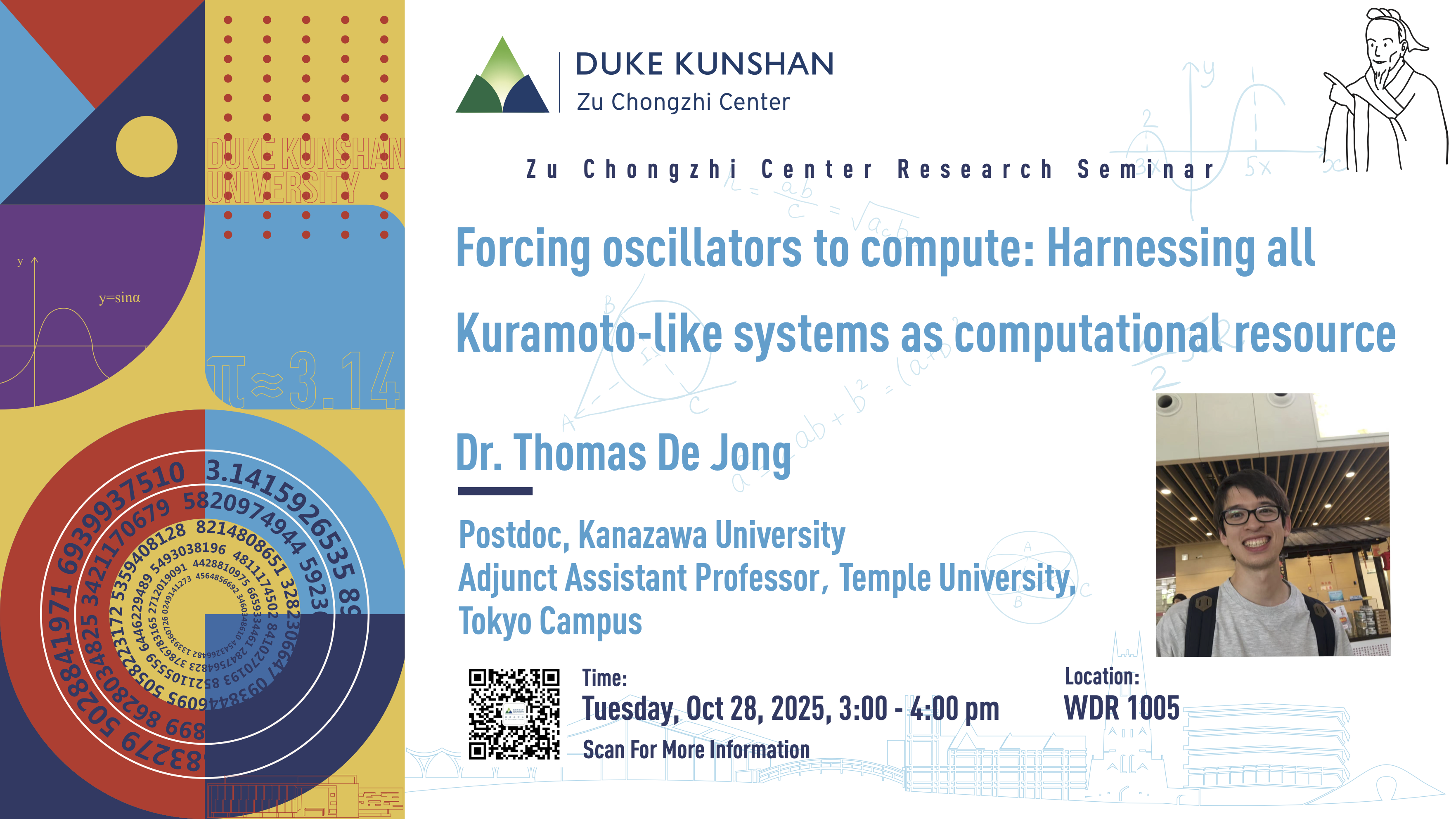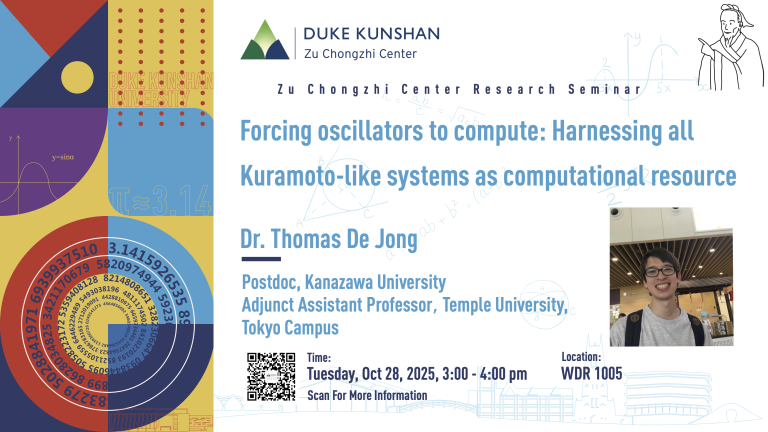Event details
Zu Chongzhi Research Seminar
Date and Time (China standard time): Tuesday, October 28, 3:00 pm-4:00 pm
Location: WDR 1005
Title: Forcing oscillators to compute: Harnessing all Kuramoto-like systems as computational resource
Speaker: Thomas De Jong
Abstract: Computing in silica comes with drawbacks, including high energy consumption, susceptibility to critical failures in extreme environments, such as high-radiation areas, as well as computational speed limitations which can be troublesome when processing real-time photonic data. This has sparked significant interest in discovering alternative physical systems that can overcome these limitations. Although great efforts have been made to design computer sub-components using non-traditional media, these approaches have not yet come close to building a functional device.
A framework that overcomes this is physical reservoir computing as it allows us to directly harness the computational capabilities of a physical system without requiring a specific architecture which greatly reduces engineering overhead [1]. However, it is difficult to identify what physical systems can be utilized as reservoir computers. We propose a fundamental framework for physical reservoir computing by observing that an oscillator network subject to input forcing can be used as a computational resource [2]. Here we shall mainly consider Kuramoto oscillators, but the work extends to more general models in active matter and complex networks. We show by example that it can be used to perform a large variety of computational tasks for a wide range of parameters; here given by coupling and forcing strength. Due to the omnipresence of Kuramoto-like systems we have a whole new range of systems whose computational capabilities can be investigated.
The setting of physical reservoir computing is somewhat different from reservoir computing in the classical artificial neural network setting so we will start this talk by introducing physical reservoir computers of collaborators (tentacle and twin-vortex reservoir). We present our Kuramoto based reservoir computer in a numerical context and finally investigate a mathematical angle by exploring its continuum limit using the so-called Ott-Antonsen Ansatz [3].
References:
[1] K. Nakajima (2020). Physical reservoir computing: an introductory perspective. Jpn.
J. Appl. Phys. 59, 060501.
[2] T. de Jong, H Notsu, K, Nakajima (2025). Harnessing omnipresent oscillator networks
as computational resource. arXiv:2502.04818
[3] T. de Jong. Designing learning in high dimensional oscillator networks with low dimensional read-out. arXiv:2509.00848
(up to date paper info here https://mathowl.github.io/tgdejong/publications/)
Bio: I received a Phd from TU Eindhoven on biomath. After a postdoc at Xiamen University on the intersection of math and AI I moved to Kanazawa University where I currently work on theoretical frameworks for physical reservoir computing. Additionally, I am an adjunct assistant professor at Temple University, Tokyo Campus.



